Optimisation of Mechanical Characteristics of Alkali-Resistant Glass Fibre Concrete towards Sustainable Construction
Abstract
1. Introduction
2. Design of Experiments
2.1. Background
2.2. Response Surface Methodology
3. Materials and Methods
3.1. Materials
3.2. Mix Proportioning
3.3. Preparation of Samples
4. Results and Discussion
4.1. Mechanical Properties
4.1.1. Compressive Strength
4.1.2. Split Tensile Strength
4.1.3. Flexural Strength
4.1.4. Modulus of Elasticity
4.1.5. Impact Resistance
4.2. Durability
Ultrasonic Pulse Velocity
4.3. Assessment of Sustainability
4.3.1. Embodied Carbon
4.3.2. Eco Strength Efficiency
5. ANOVA (Analysis of Variance)
6. Optimisation of Glass Fibre in Concrete Using RSM
7. Validation of Model Developed by RSM
8. Conclusions
- According to the study, the optimum percentage of GF to be used in concrete is 1.25%, which results in increasing the compressive strength (CS), split tensile strength (STS), flexural strength (FS), and modulus of elasticity (MoE) by 11.76%, 17.63%, 17.73%, and 5.72%, respectively.
- Increasing the GF content increases the embodied carbon; a proportion containing 2% of GF has the maximum embodied carbon, while concrete containing 1.25% GF has the highest ESE.
- The addition of GF has shown a significant improvement in the sudden impact. Specifically, 1.00% or 1.25% inclusion of GF is the optimal percentage with high resistance to sudden impacts on concrete.
- For the assessment of concrete’s quality and integrity, the UPV test was conducted, which shows that all the proportions with varying quantities of GF improved the value of UPV, which means GF addition in concrete improves its quality. Concrete containing 1.25% of GF has the maximum UPV.
- For CS (compressive strength), MoE (modulus of elasticity), EC (embodied carbon), and ESE (eco-strength efficiency), the fifth model is declared as the best-fit model. For STS (split tensile strength), the sixth model is declared the best-fit model. The quadratic model is deemed the most suitable fit for flexural strength (FS).
- The value for the coefficient of determination (R2) for CS (compressive strength), STS (split tensile strength), FS (flexural strength), MoE (modulus of elasticity), EC (embodied carbon), and ESE (eco-strength efficiency) are 0.9999, 0.9991, 0.9398, 0.9999, 0.9999, and 0.9999, respectively.
- The optimised values obtained via the process of optimisation of each response using RSM are 0.0124, 52.122, 4.969, 4.23, 33.93, 499.413, and 0.104 for CS (compressive strength), STS (split tensile strength), FS (flexural strength), MoE (modulus of elasticity), EC (embodied carbon), and ESE (eco-strength efficiency).
- The validation process shows that the margin of error among experimental and anticipated values is less than 5%, which shows that the model developed by RSM for each response is highly accurate.
Author Contributions
Funding
Institutional Review Board Statement
Informed Consent Statement
Data Availability Statement
Acknowledgments
Conflicts of Interest
References
- Alam, M.; Ahmad, S.I. Concrete and It’s Properties; Bangladesh University of Engineering and Technology (BUET): Dhaka, Bangladesh, 2020. [Google Scholar] [CrossRef]
- Aydın, F.; Akyürek, M.; Arslan, Ş.; Yılmaz, K. Effects of concrete cover thickness and concrete strength on temperature transfer in high temperature exposed FRP reinforced concrete. Rev. Constr. 2023, 22, 242–258. [Google Scholar] [CrossRef]
- Widiana, N.; Satyarno, I.; Siswosukarto, S. The Effect of Polypropylene Fiber and Steel Fiber on Geopolymer Concrete. J. Tek. Sipil Perenc. 2023, 25, 71–80. [Google Scholar] [CrossRef]
- Karim, M.; Abdullah, M.; Ahmed, T. An Overview: The Processing Methods of Fiber-reinforced Polymers (FRPs). J. Mech. Eng. Technol. 2021, 12, 10–24. [Google Scholar] [CrossRef]
- Al-Rousan, E.T.; Khalid, H.R.; Rahman, M.K. Fresh, mechanical, and durability properties of basalt fiber-reinforced concrete (BFRC): A review. Dev. Built Environ. 2023, 14, 100155. [Google Scholar] [CrossRef]
- Khan, M.B.; Shafiq, N.; Waqar, A.; Radu, D.; Cismaș, C.; Imran, M.; Almujibah, H.; Benjeddou, O. Effects of Jute Fiber on Fresh and Hardened Characteristics of Concrete with Effects of Jute Fiber on Fresh and Hardened Characteristics of Concrete with Environmental Assessment. Buildings 2023, 13, 1691. [Google Scholar] [CrossRef]
- Ardhira, P.J.; Ardra, R.; Harika, M.; Sathyan, D. Study on fibre reinforced foam concrete-a review. Mater. Today Proc. 2023, in press. [Google Scholar] [CrossRef]
- Khan, M.B.; Waqar, A.; Bheel, N.; Shafiq, N.; Sor, N.H. Optimization of fresh and mechanical characteristics of carbon fiber-reinforced concrete composites using response surface technique. Buildings 2023, 13, 852. [Google Scholar] [CrossRef]
- Ahmad, J.; Zhou, Z.; Deifalla, A.F. Structural properties of concrete reinforced with bamboo fibers: A review. J. Mater. Res. Technol. 2023, 24, 844–865. [Google Scholar] [CrossRef]
- Karim, M.; Abdullah, M.; Deifalla, A.; Azab, M.; Waqar, A. An assessment of the processing parameters and application of fibre-reinforced polymers (FRPs) in the petroleum and natural gas industries: A review. Results Eng. 2023, 18, 101091. [Google Scholar] [CrossRef]
- Basit, M.; Engineering, E.; Petronas, U.T.; Is-kandar, B.S. Production of Biochar from Waste Biomass Feedstock and its Applications in Sustainable Construction. J. Xi’an Pet. Inst. 2023, 19, 662–690. [Google Scholar]
- Waqar, A.; Khan, M.B.; Othman, I.; Mansoor, M.S.; Shafiq, N. A Systematic Literature Review on Risk Analysis of Health and Safety in Oil Refinery and Onshore Pipeline Construction Projects. In Proceedings of the 2022 International Conference on Data Analytics for Business and Industry (ICDABI), Sakhir, Bahrain, 25–26 October 2022; pp. 358–365. [Google Scholar] [CrossRef]
- Panzera, T.H.; Christoforo, A.L.; Ribeiro Borges, P.H. 15—High performance fibre-reinforced concrete (FRC) for civil engineering applications. In Advanced Fibre-Reinforced Polymer (FRP) Composites for Structural Applications; Woodhead Publishing Series in Civil and Structural Engineering; Bai, J., Ed.; Woodhead Publishing: Cambridge, UK, 2013; pp. 552–581. [Google Scholar]
- Raut, M.V. Influence of fine-grain fly ash along with glass fiber on strength and cost of proposed concrete mixes. Mater. Today Proc. 2023, in press. [Google Scholar] [CrossRef]
- Mao, J.; Liang, N.; Liu, X.; Zhong, Z.; Zhou, C. Investigation on early-age cracking resistance of basalt-polypropylene fiber reinforced concrete in restrained ring tests. J. Build. Eng. 2023, 70, 106155. [Google Scholar] [CrossRef]
- Ranaivomanana, H.; Leklou, N. Investigation of microstructural and mechanical properties of partially hydrated Asbestos-Free fiber cement waste (AFFC) based concretes: Experimental study and predictive modeling. Constr. Build. Mater. 2021, 277, 121943. [Google Scholar] [CrossRef]
- Zhang, C.; Zhu, Z.; Wang, S.; Zhang, J. Macro-micro mechanical properties and reinforcement mechanism of alkali-resistant glass fiber-reinforced concrete under alkaline environments. Constr. Build. Mater. 2023, 368, 130365. [Google Scholar] [CrossRef]
- Wypych, G. 16—Weathering of Compounded Products. In Hand book of material weathering, 5th ed.; Elsevier: Oxford, UK, 2013; pp. 581–717. [Google Scholar] [CrossRef]
- Harish, B.A.; Hanumesh, B.M.; Venkata Ramana, N.; Gnaneswar, K. Mechanical properties of recycled coarse aggregate concrete incorporating steel and glass fibre. Mater. Today Proc. 2023, in press. [Google Scholar] [CrossRef]
- Paktiawal, A.; Alam, M. Alkali-resistant glass fiber high strength concrete and its durability parameters. Mater. Today Proc. 2021, 47, 4758–4766. [Google Scholar] [CrossRef]
- Jonalagadda, K.B.; Kumar Jagarapu, D.C.; Eluru, A. Experimental analysis on supplementary cementitious materials with Alkali Resistant glass fibers. Mater. Today Proc. 2020, 27, 1569–1574. [Google Scholar] [CrossRef]
- Kasagani, H.; Rao, C.B.K. Effect of graded fibers on stress strain behaviour of Glass Fiber Reinforced Concrete in tension. Constr. Build. Mater. 2018, 183, 592–604. [Google Scholar] [CrossRef]
- Li, G.; Zhou, Q.; Wang, W.; Lu, C.; Chen, C.; Guo, Z.; Lu, C. Chloride diffusion along the interface between concrete matrix and repair materials under flexural loading. Constr. Build. Mater. 2023, 372, 130829. [Google Scholar] [CrossRef]
- Kondratyeva, N.; Golovatyuk, M. Research of technical characteristics of glass-fiber concrete. Urban Constr. Archit. 2023, 13, 82–91. [Google Scholar] [CrossRef]
- Al, R.H.; Shehzad, M.K.; Garcia-taengua, E. Flexural and deflection behaviour of synthetic fibre reinforced concrete beams reinforced with glass fibre reinforced polymers bars under sustained service load. Structures 2023, 54, 946–955. [Google Scholar]
- Peters, A.M.; Henderson, B.L.; Manjusha, M.; Althaf, M.; Mahato, K.K.; Rathore, D.K. Compressive and flexural behavior of glass fiber- reinforced concrete Compressive and flexural behavior of glass fiber-reinforced concrete. J. Phys. Conf. Ser. 2023, 2423, 012025. [Google Scholar] [CrossRef]
- Ulu, A.; Tutar, A.I.; Kurklu, A.; Cakir, F. Effect of excessive fiber reinforcement on mechanical properties of chopped glass fiber reinforced polymer concretes. Constr. Build. Mater. 2022, 359, 129486. [Google Scholar] [CrossRef]
- Ahmad, J.; González-Lezcano, R.A.; Majdi, A.; Ben Kahla, N.; Deifalla, A.F.; El-Shorbagy, M.A. Glass Fibers Reinforced Concrete: Overview on Mechanical, Durability and Microstructure Analysis. Materials 2022, 15, 5111. [Google Scholar] [CrossRef] [PubMed]
- Kennedy, C.; Bheel, N.; Nadeem, G.; Benjeddou, O.; Waqar, A.; Khan, M.B. Efficiency of ficus sycomorus exudates as corrosion inhibitor for mild steel pipes in acid concentrated water and soil. Saf. Extrem. Environ. 2023. [Google Scholar] [CrossRef]
- Shamskilani, M.; Pourrostami Niavol, K.; Erfan, N.; Mehrnia, M.; Sharafi, A. Removal of Emerging Contaminants in a Membrane Bioreactor Coupled with Ozonation: Optimization by Response Surface Methodology (RSM). Water Air Soil Pollut. 2023, 234, 304. [Google Scholar] [CrossRef]
- Cheng, C.-L.; Shalabh, S.; Garg, G. Coefficient of determination for multiple measurement error models. J. Multivar. Anal. 2014, 126, 137–152. [Google Scholar] [CrossRef]
- Waqar, A.; Bheel, N.; Shafiq, N.; Othman, I.; Khan, M.B.; Mansoor, M.S.; Benjeddou, O.; Yaseen, G. Effect of volcanic pumice powder ash on the properties of cement concrete using response surface methodology. J. Build. Pathol. Rehabil. 2023, 8, 17. [Google Scholar] [CrossRef]
- Chicco, D.; Warrens, M.J.; Jurman, G. The coefficient of determination R-squared is more informative than SMAPE, MAE, MAPE, MSE and RMSE in regression analysis evaluation. PeerJ Comput. Sci. 2021, 7, e623. [Google Scholar] [CrossRef]
- ASTM C78/C78M; Flexural Performance of Composite RC Beams Having an ECC Layer at the Tension Face. ASTM: West Conshohocken, PA, USA, 2021.
- ASTMC496; Standard Test Method for Splitting Tensile Strength of Cylindrical Concrete Specimens 1. ASTM: West Conshohocken, PA, USA, 2017.
- ASTM C78/C78M-21; Flexural Performance of Composite RC Beams Having an ECC Layer at the Tension Face. ASTM: West Conshohocken, PA, USA, 2017.
- ASTM C469; Standard Test Method for Static Modulus of Elasticity and Poisson’s Ratio of Concrete in Compression. ASTM: West Conshohocken, PA, USA, 2017.
- ACI544; Experimental and Statistical Analysis of Repeated Impact Records of Hybrid Fiber-Reinforced High-Performance Concrete. American Concrete Institute: Farmington Hills, MI, USA, 2018.
- Mastali, M.; Dalvand, A.; Sattarifard, A.R. The impact resistance and mechanical properties of reinforced self-compacting concrete with recycled glass fibre reinforced polymers. J. Clean. Prod. 2016, 124, 312–324. [Google Scholar] [CrossRef]
- Prasad, N.; Murali, G.; Vatin, N. Modified Falling Mass Impact Test Performance on Functionally Graded Two Stage Aggregate Fibrous Concrete. Materials 2021, 14, 5833. [Google Scholar] [CrossRef]
- Patil, D.; Anadinni, S. Computation of Static Modulus of Elasticity and Poisson’s Ratio of M20 Grade Self-Curing Concrete with Peg-400 as a Self Curing Agent Using is Code and ASTM Standard. In Proceedings of the Proceedings of the International Conference on Recent Advances in Computational Techniques (IC-RACT) 2020, Mumbai, India, 27–28 March 2020. [Google Scholar] [CrossRef]
- Thaker, T.; Dalal, S.P.; Motiani, R.; Contractor, H. Effect of Electrical Grade Glass fibers and Alkaline Resistant Glass fibers on high strength concrete. Mater. Today Proc. 2022, 62, 6998–7001. [Google Scholar] [CrossRef]
- Kushartomo, W.; Ivan, R. Effect of Glass Fiber on Compressive, Flexural and Spliting Strength of Reactive Powder Concrete. MATEC Web Conf. 2017, 138, 03010. [Google Scholar] [CrossRef]
- Dominic, M. Properties of Glass Fiber Reinforced Concrete A Review. Int. J. Creat. Res. Thoughts 2018, 6, 356–360. [Google Scholar]
- Hake, S.L.; Shinde, S.S.; Bhandari, P.K.; Awasarmal, P.R.; Kanawade, B.D. Effect of Glass Fibers on Self Compacting Concrete. E3S Web Conf. 2020, 170, 06018. [Google Scholar] [CrossRef]
- Patel, R.; Solanki, J.; Pitroda, D.J. A Study on Glass Fibre as an Additive in Concrete to Increase Concrete Tensile Strength. Glob. Res. Anal. 2013, 2, 85–87. [Google Scholar]
- Zweben, C.H. Composites: Overview; Bassani, F., Liedl, G.L., Wyder, P.B.T.-E.C.M.P., Eds.; Elsevier: Oxford, UK, 2005; pp. 192–208. [Google Scholar] [CrossRef]
- Kumar, P.P.; Chaitanya, B.K. Performance evaluation of glass fiber reinforced high-performance concrete with silica fume and nano-silica. IOP Conf. Ser. Earth Environ. Sci. 2022, 982, 012018. [Google Scholar] [CrossRef]
- Collins, F. Inclusion of carbonation during the life cycle of built and recycled concrete: Influence on their carbon footprint. Int. J. Life Cycle Assess. 2010, 15, 549–556. [Google Scholar] [CrossRef]
- Thilakarathna, P.S.M.; Seo, S.; Baduge, K.S.K.; Lee, H.; Mendis, P.; Foliente, G. Embodied carbon analysis and benchmarking emissions of high and ultra-high strength concrete using machine learning algorithms. J. Clean. Prod. 2020, 262, 121281. [Google Scholar] [CrossRef]
- Hammond, G.; Jones, C. The Inventory of Carbon and Energy (ICE). A BRIA Guide. Embodied Carbon. 2014. Available online: http://www.emccement.com/pdf/Full-BSRIA-ICE-guide.pdf (accessed on 9 July 2023).
- Turner, L.K.; Collins, F.G. Carbon dioxide equivalent (CO2-e) emissions: A comparison between geopolymer and OPC cement concrete. Constr. Build. Mater. 2013, 43, 125–130. [Google Scholar] [CrossRef]
- Kumar, R.; Shafiq, N.; Kumar, A.; Jhatial, A.A. Investigating embodied carbon, mechanical properties, and durability of high-performance concrete using ternary and quaternary blends of metakaolin, nano-silica, and fly ash. Environ. Sci. Pollut. Res. 2021, 28, 49074–49088. [Google Scholar] [CrossRef] [PubMed]
- Cushman, B.R. Energy Consumption Energy Type; Dartmouth College: Hanover, NH, USA, 2017. [Google Scholar]
- Jones, R.; Mccarthy, M.; Newlands, M. Fly Ash Route to Low Embodied CO2 and Implications for Concrete Construction. In Proceedings of the 2011 World of Coal Ash (WOCA) Conference, Denver, CO, USA, 9–12 May 2011. [Google Scholar]
- Carvalho, A.; Souza, M.; Marques, T.; Souza, D.; Souza, E. Familywise type I error of ANOVA and ANOVA on ranks in factorial experiments. Ciênc. Rural 2023, 53, e20220146. [Google Scholar] [CrossRef]
- Ali, M.; Kumar, A.; Yvaz, A.; Salah, B. Central composite design application in the optimization of the effect of pumice stone on lightweight concrete properties using RSM. Case Stud. Constr. Mater. 2023, 18, e0195. [Google Scholar] [CrossRef]
- Schneider, A.; Hommel, G.; Blettner, M. Simple Linear Regression IV The Coefficient of Determination, R 2. 0–3. Dtsch. Arztebl. Int. 2010, 107, 776–782. [Google Scholar]
- Waqar, A.; Othman, I.; Almujibah, H.; Khan, M.B.; Alotaibi, S.; Elhassan, A.A.M. Factors Influencing Adoption of Digital Twin Advanced Technologies for Smart City Development: Evidence from Malaysia. Buildings 2023, 13, 775. [Google Scholar] [CrossRef]
- Sajjad, M.; Hu, A.; Waqar, A.; Falqi, I.; Alsulamy, S.; Bageis, A.; Alshehri, A. Evaluation of the Success of Industry 4.0 Digitalization Practices for Sustainable Construction Management: Chinese Construction Industry. Buildings 2023, 13, 1668. [Google Scholar] [CrossRef]
- Hahn, G.J. The Coefficient of Determination Exposed. Chem. Technol. 1973, 3, 609–612. [Google Scholar]
- Waqar, A.; Skrzypkowski, K.; Almujibah, H.; Zagórski, K.; Khan, M.B.; Zagórska, A.; Benjeddou, O. Success of Implementing Cloud Computing for Smart Development in Small Success of Implementing Cloud Computing for Smart Development in Small Construction Projects. Appl. Sci. 2023, 13, 5713. [Google Scholar] [CrossRef]
- Mirza, F.A.; Soroushian, P. Effects of alkali-resistant glass fiber reinforcement on crack and temperature resistance of lightweight concrete. Cem. Concr. Compos. 2002, 24, 223–227. [Google Scholar] [CrossRef]
- Marimuthu, V.; Annadurai, R. A study on the macro-properties of PCB fiber-reinforced concrete from recycled electronic waste and validation of results using RSM and ANN. Asian J. Civ. Eng. 2023, 24, 1667–1680. [Google Scholar] [CrossRef]
- Waqar, A.; Khan, M.B.; Shafiq, N.; Skrzypkowski, K.; Zagórski, K.; Zagórska, A. Assessment of Challenges to the Adoption of IOT for the Safety Management of Small Construction Projects in Malaysia: Structural Equation Modeling Approach. Appl. Sci. 2023, 13, 3340. [Google Scholar] [CrossRef]
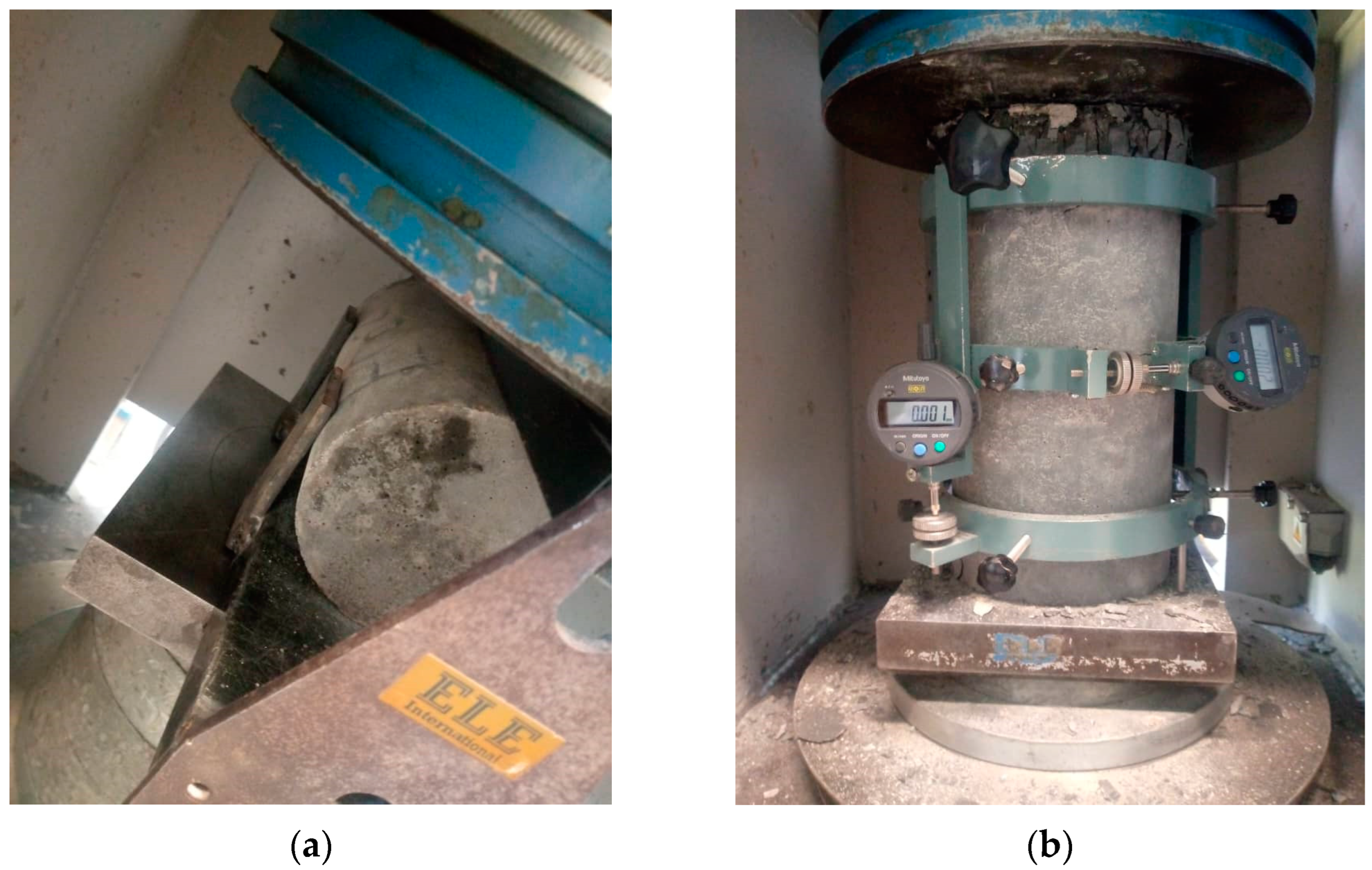
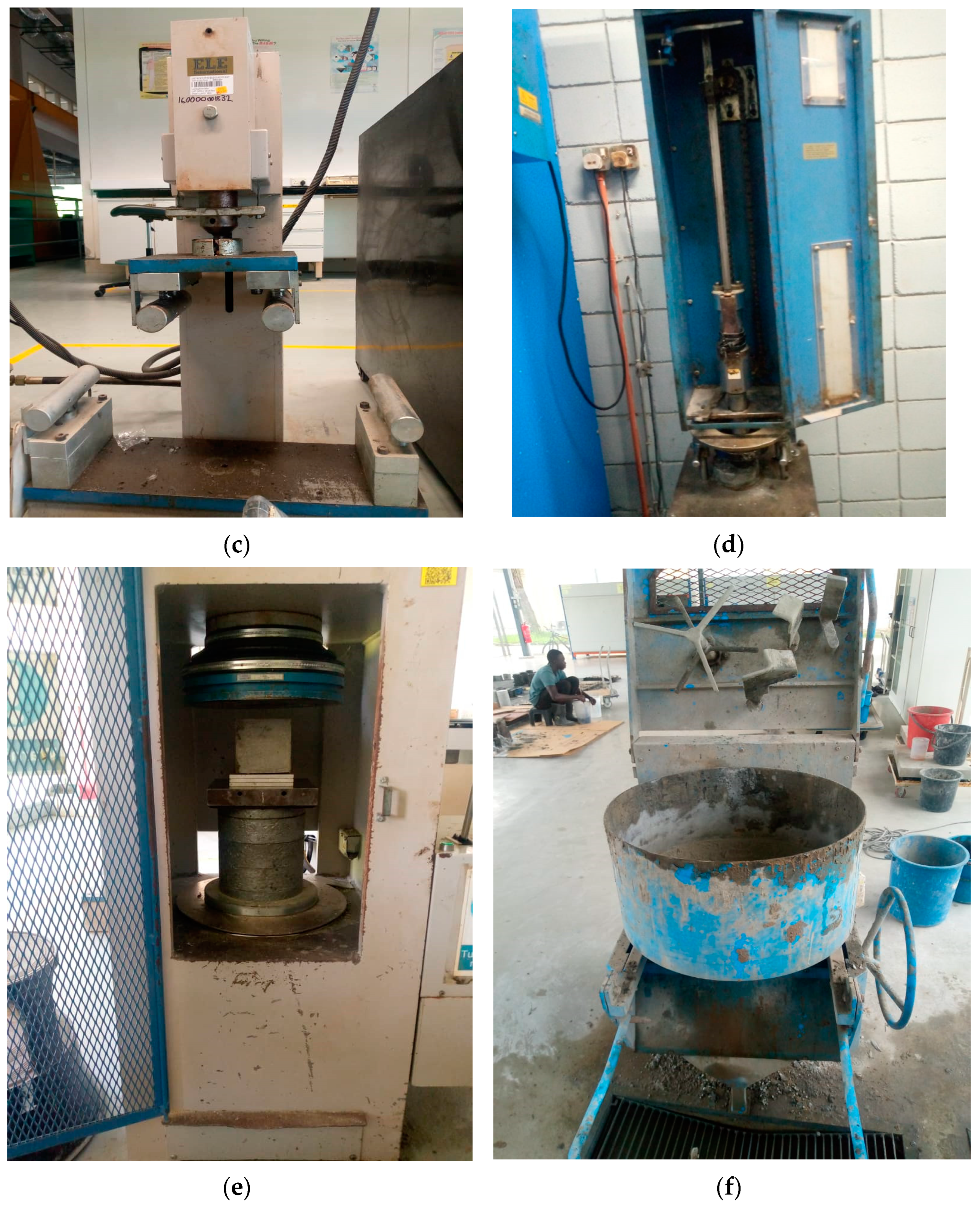


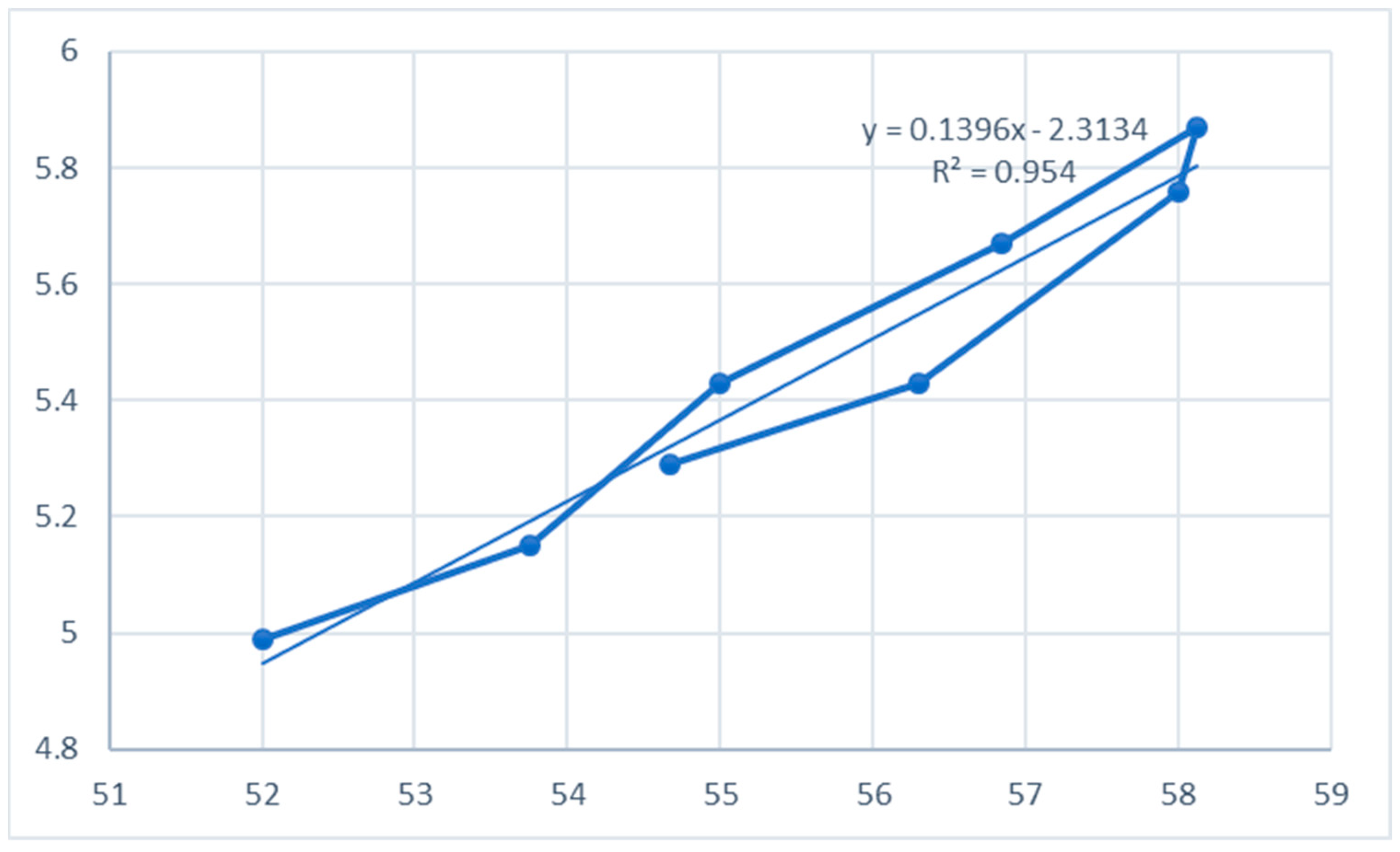

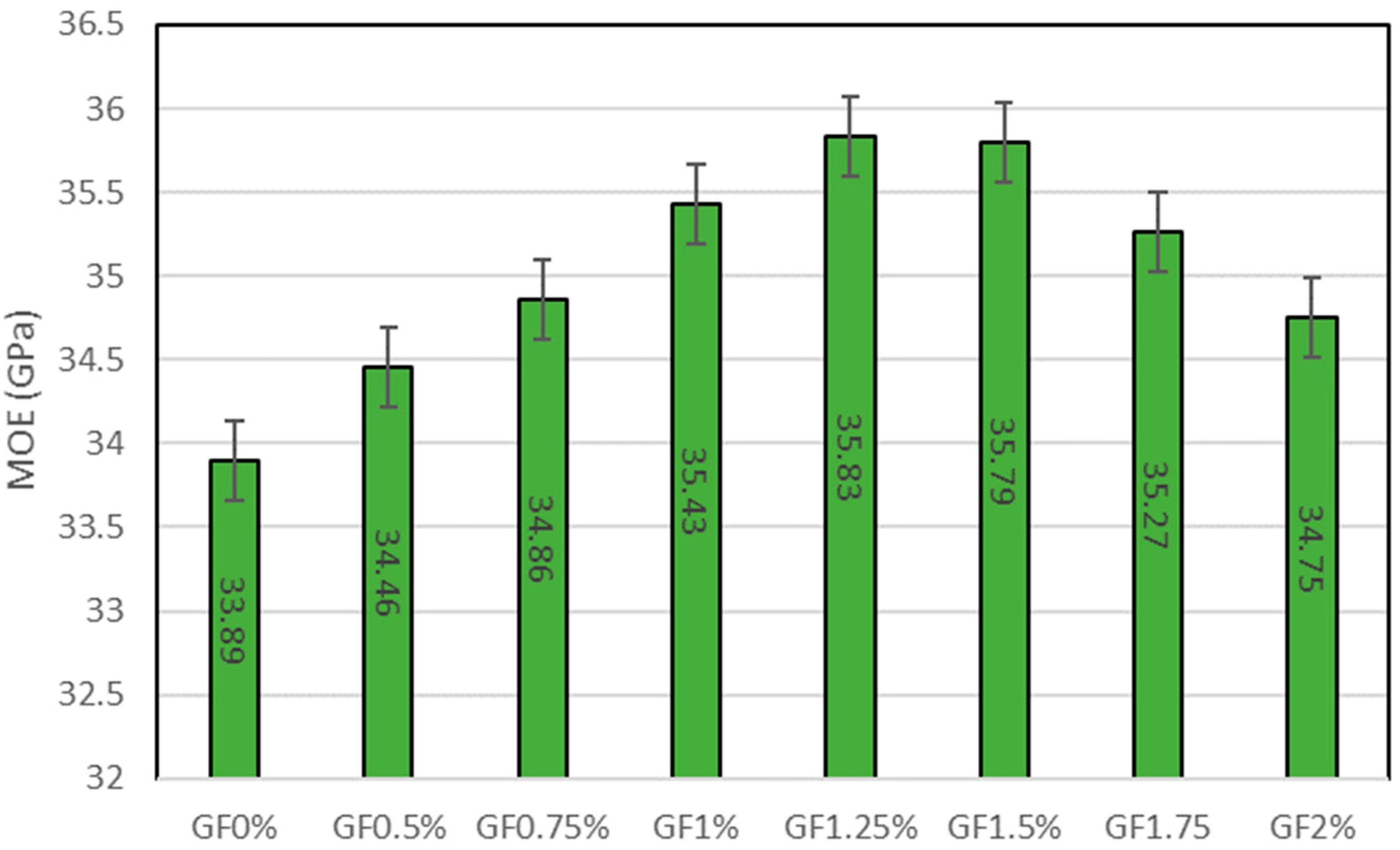

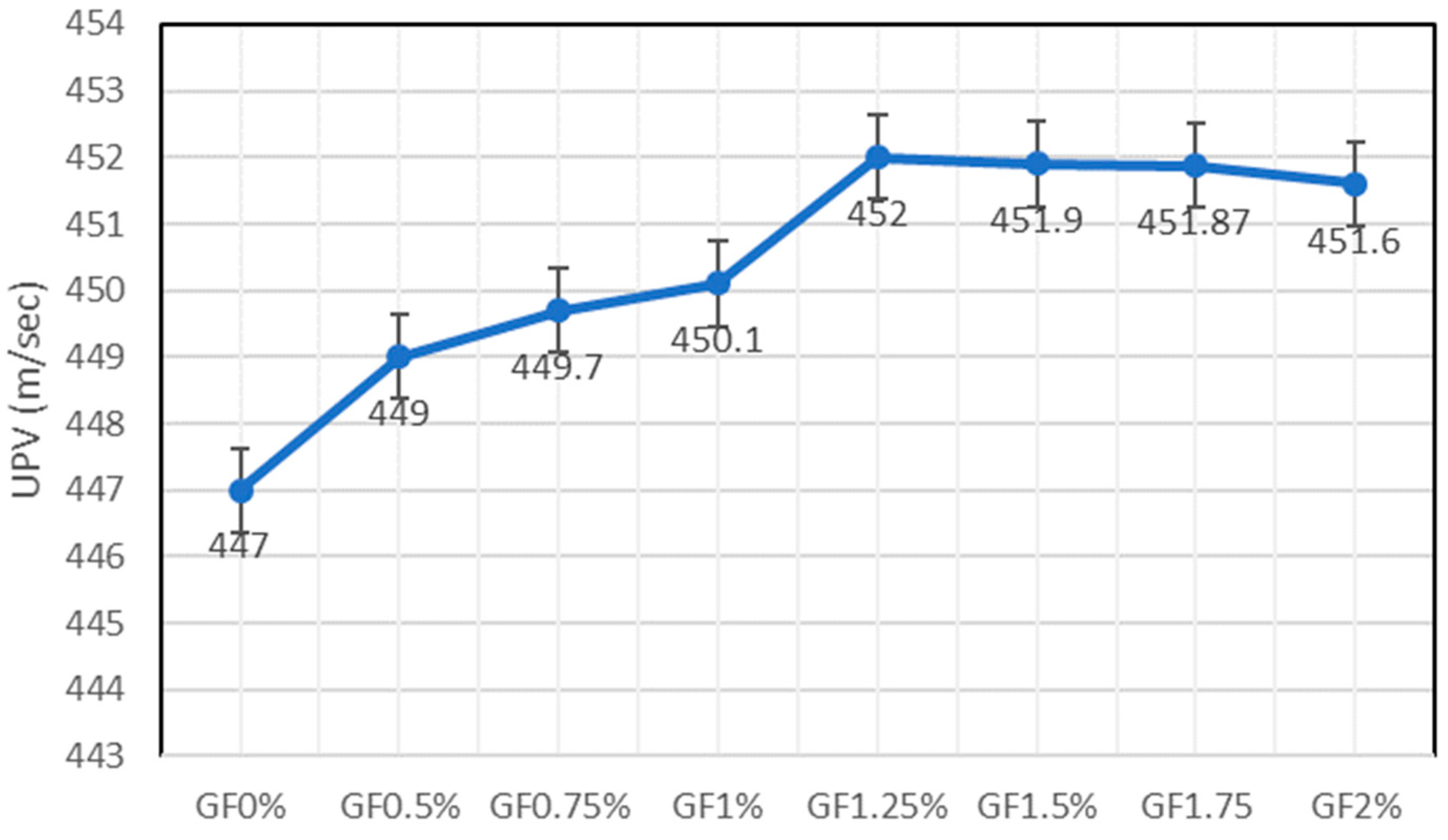
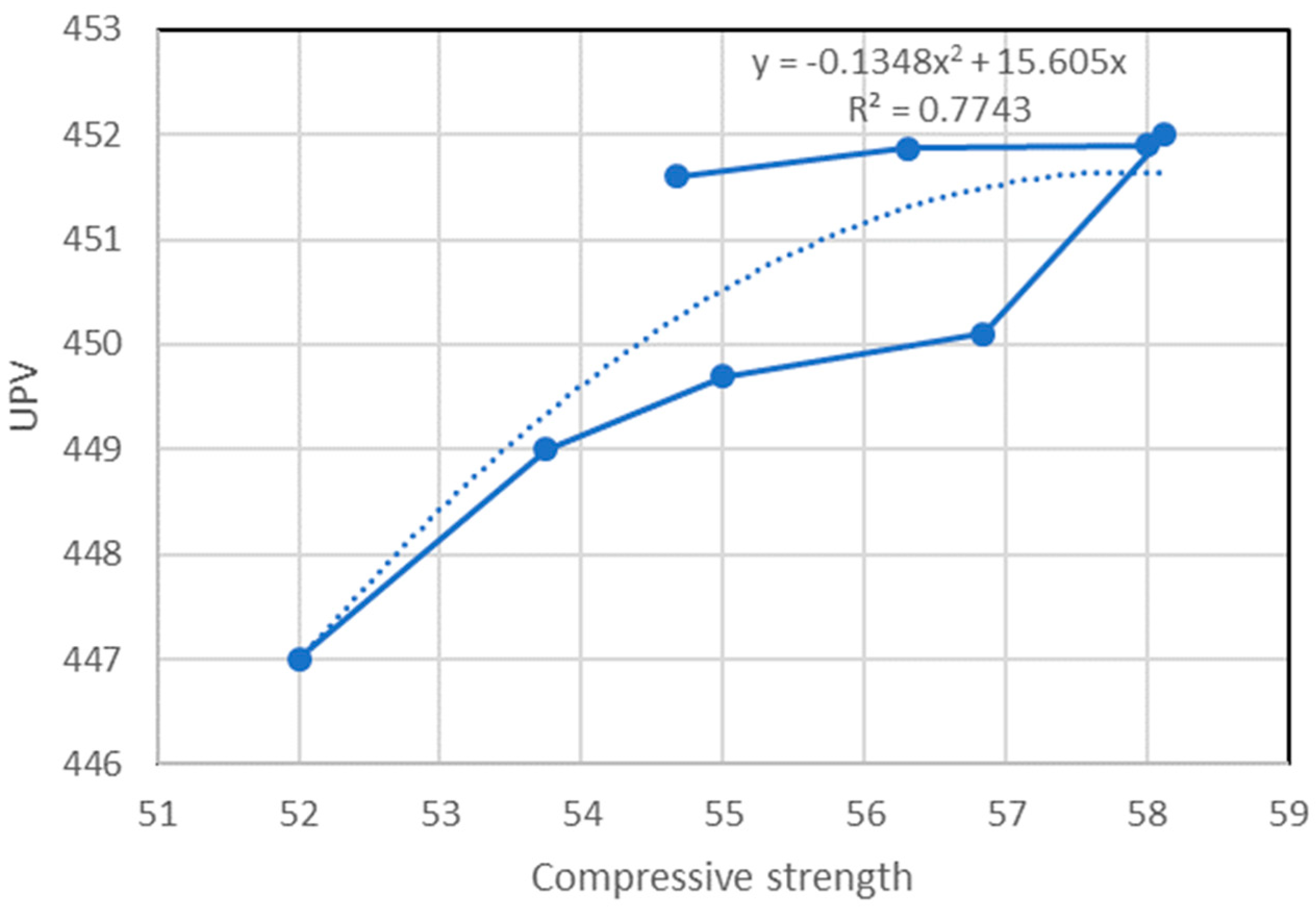

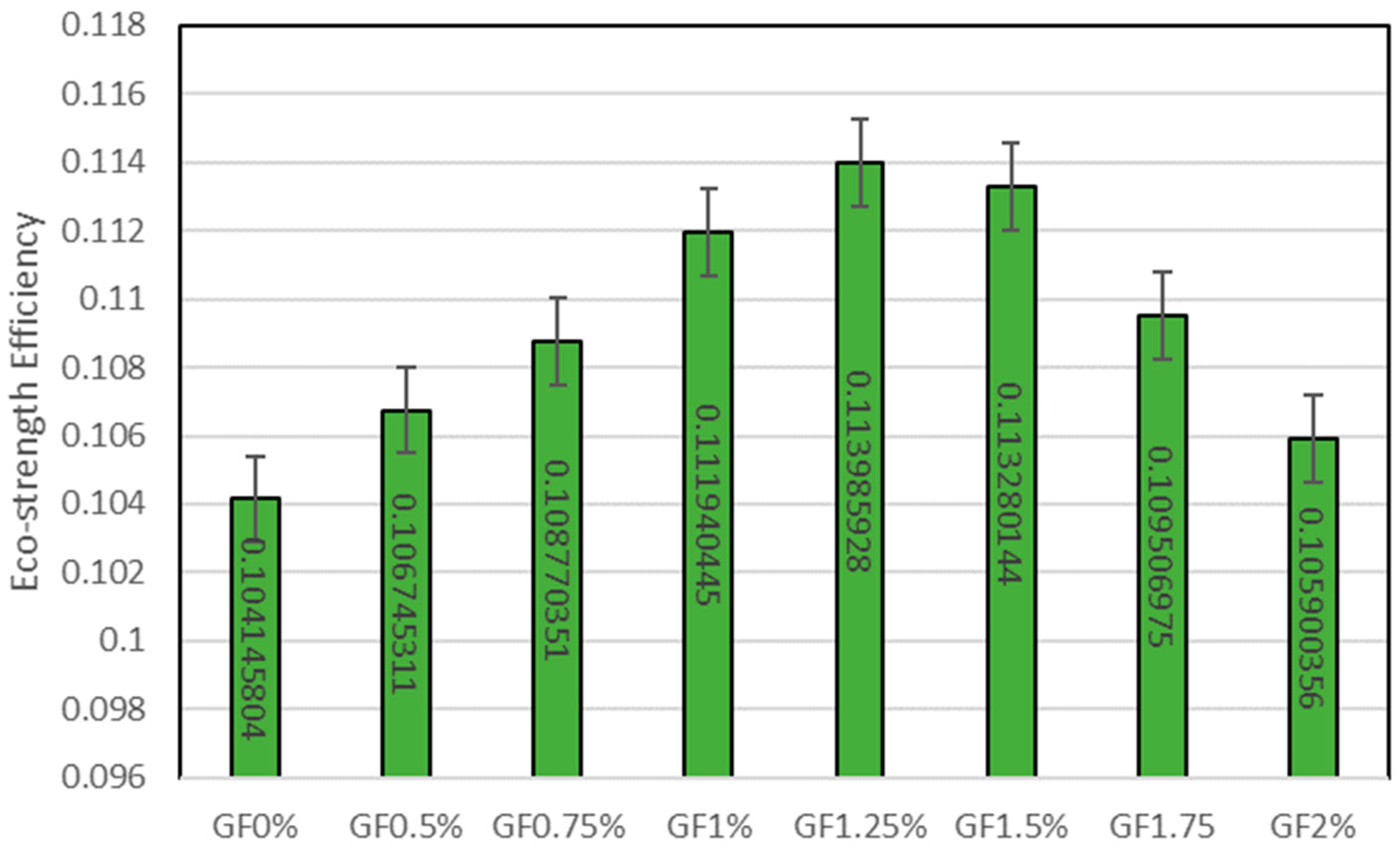

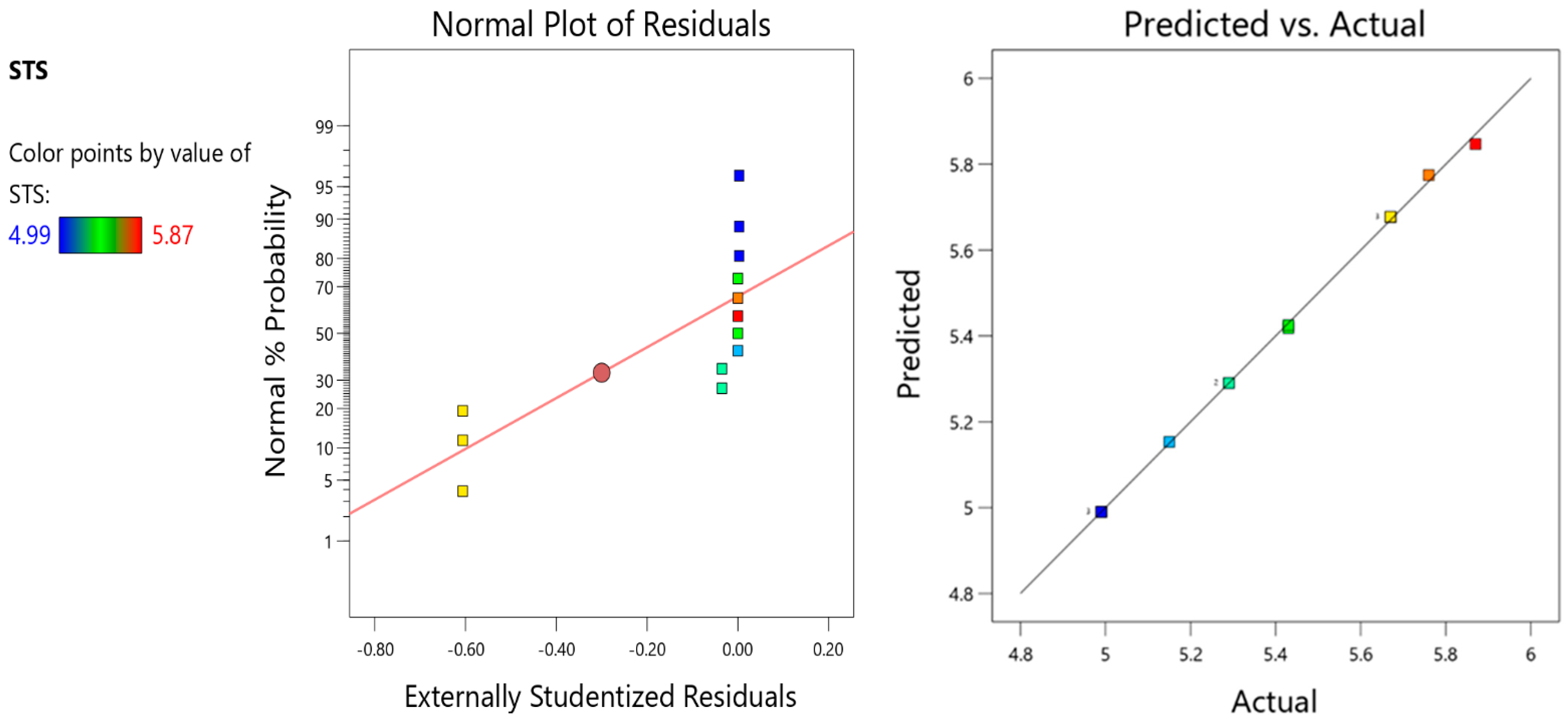


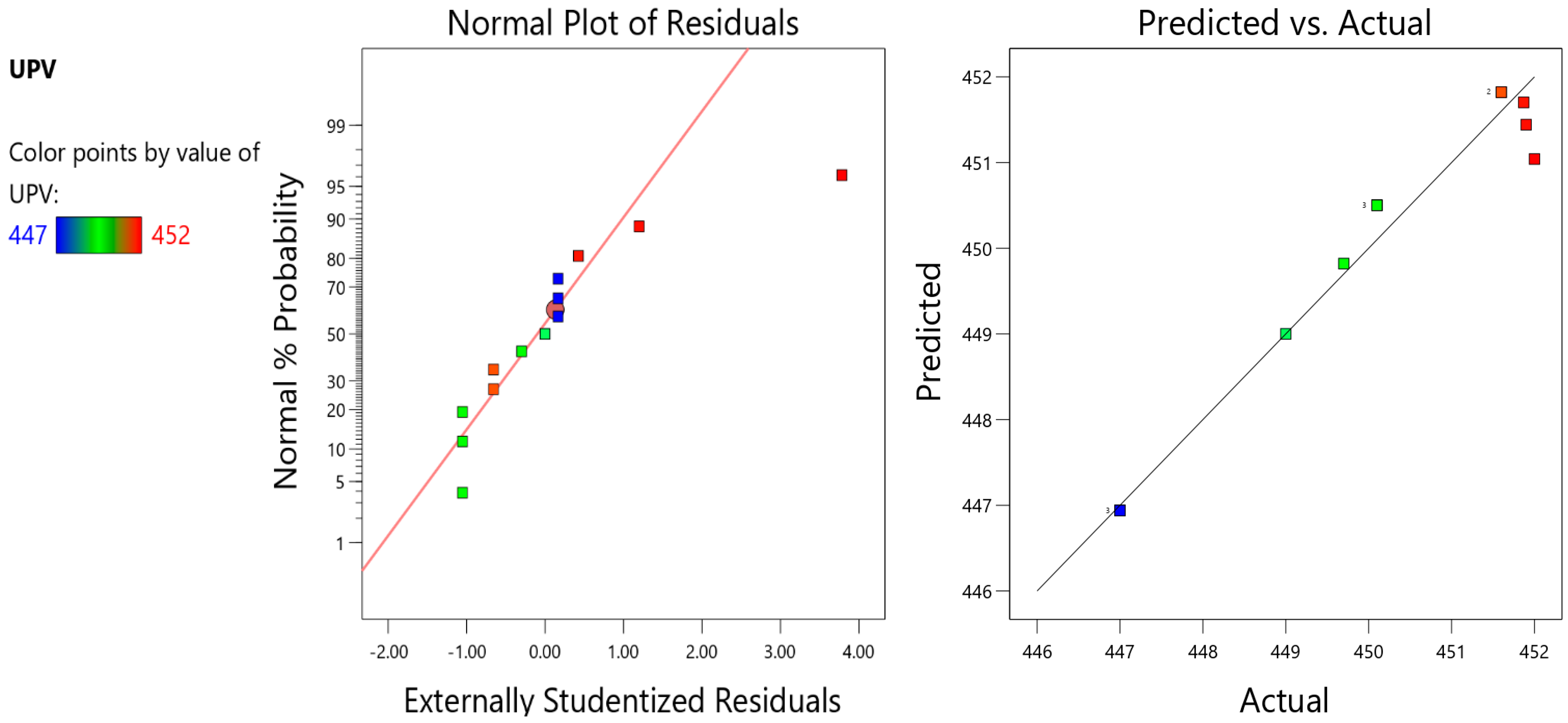
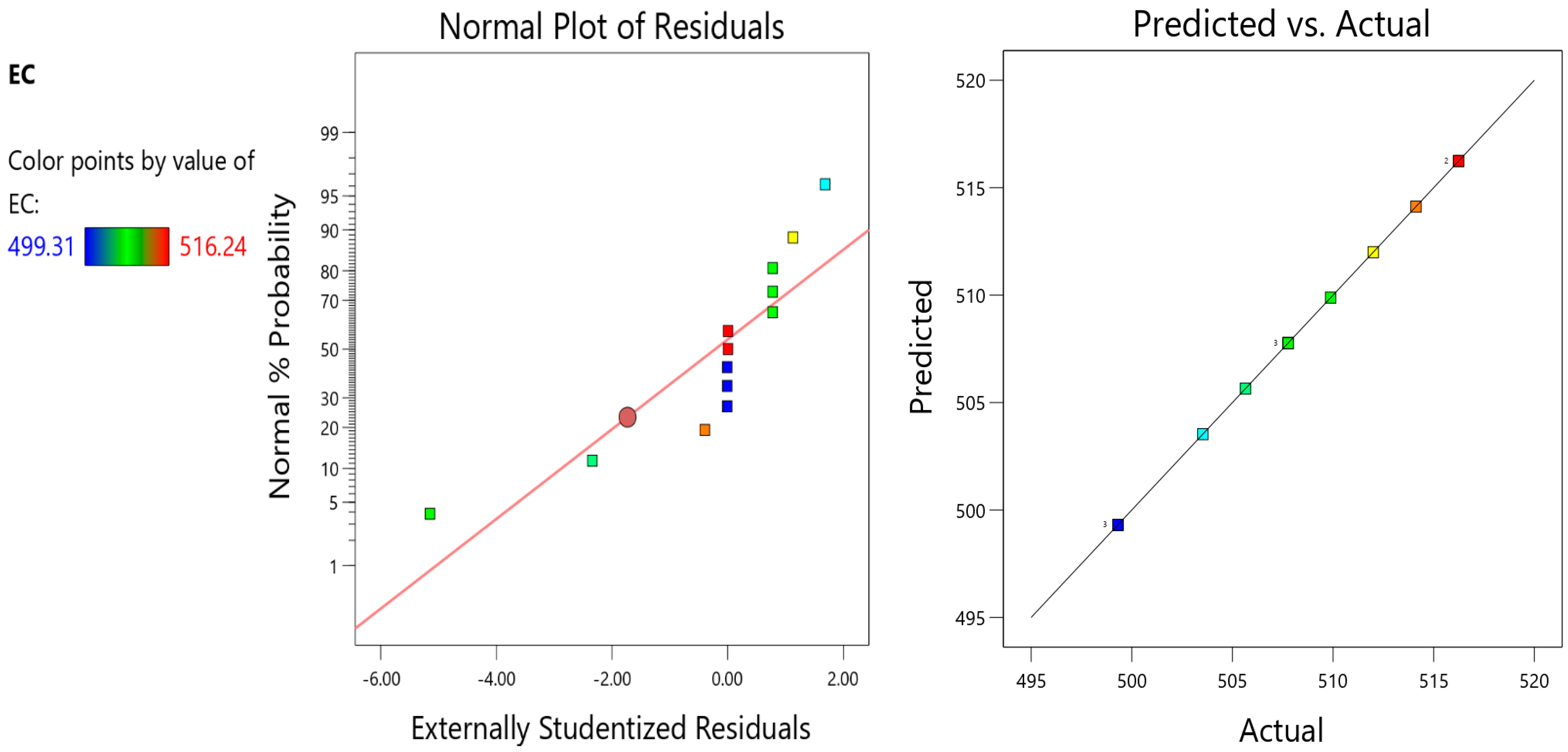
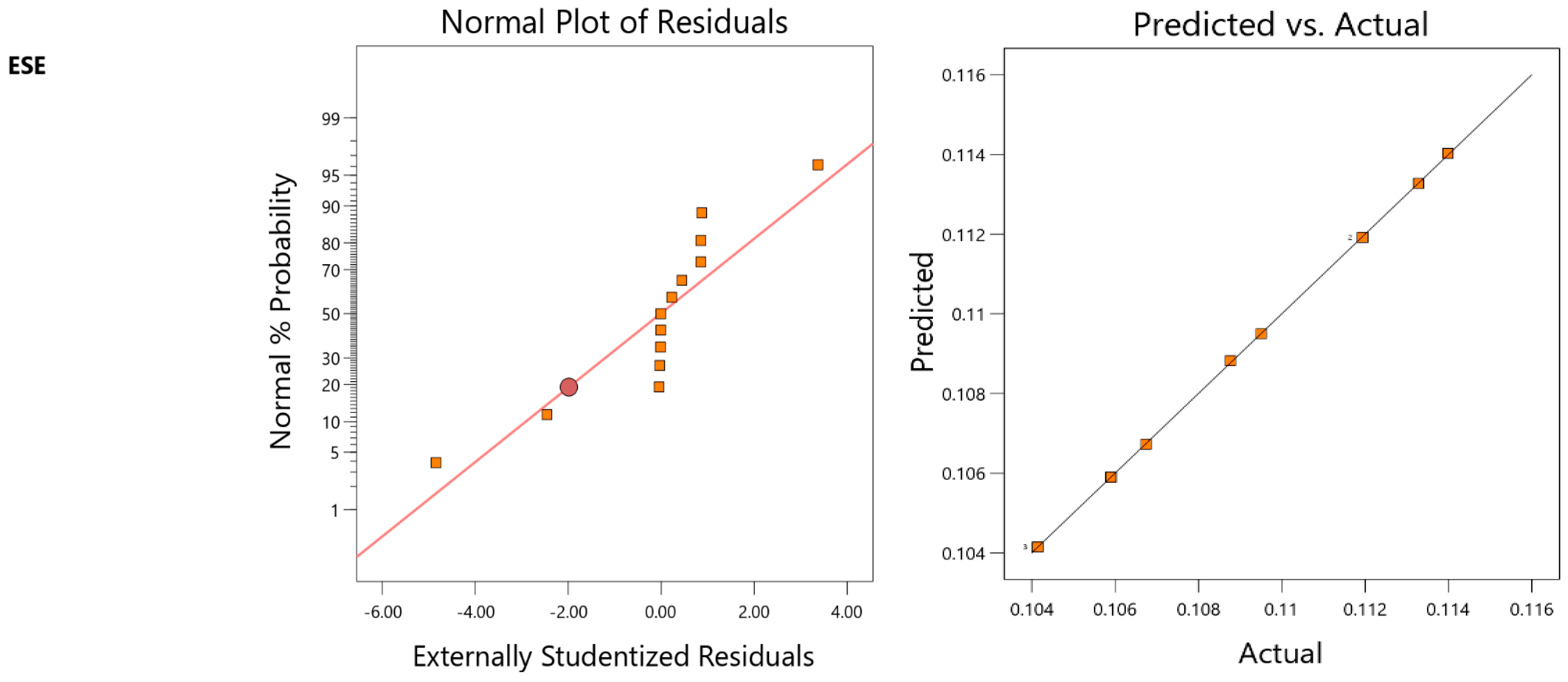
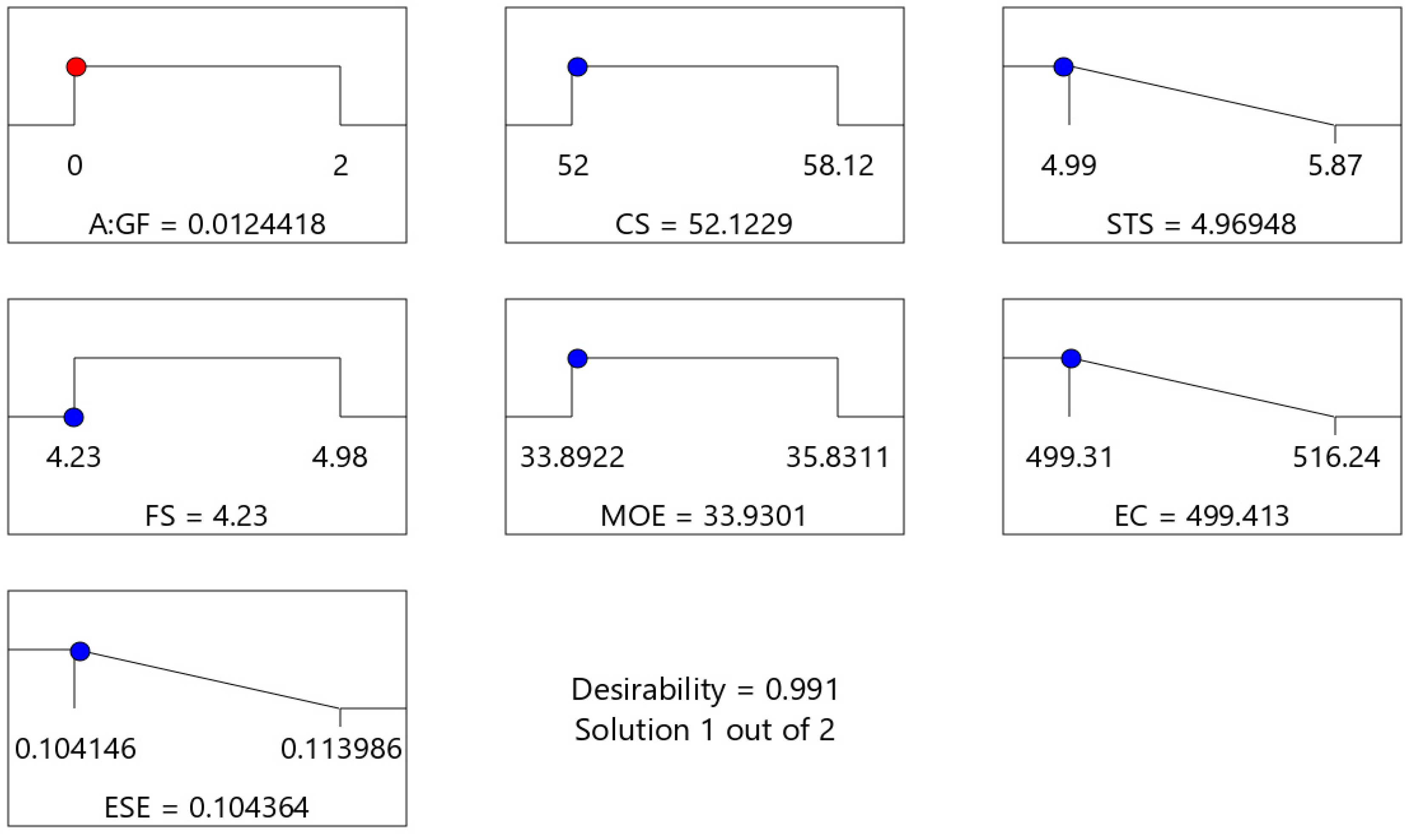
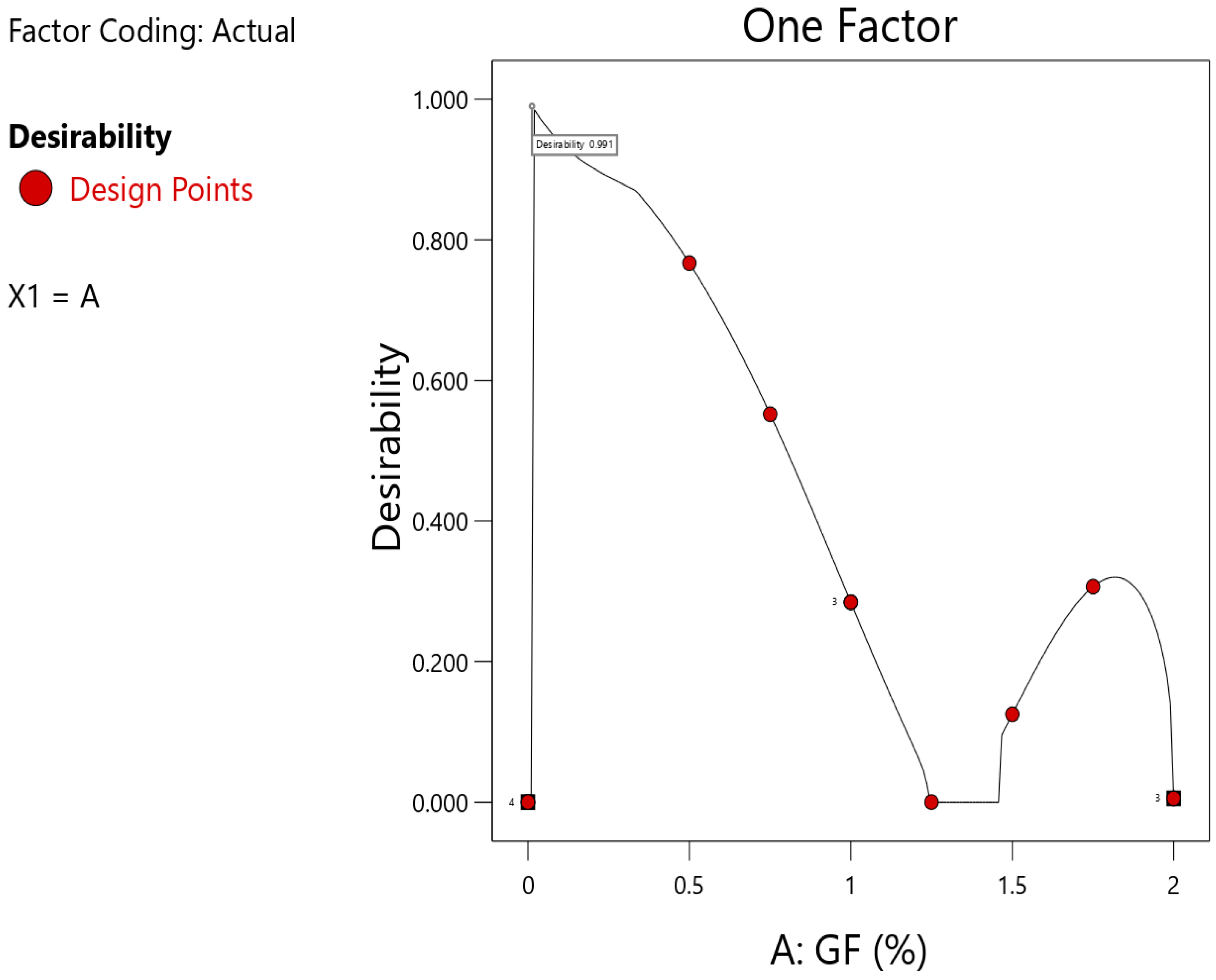
| MIX | Cement Kg/m3 | GF. % | Silica Fumes Kg/m3 | Fine Aggregate Kg/m3 | Coarse Aggregate Kg/m3 | Water Kg/m3 | Superplasticizer % |
|---|---|---|---|---|---|---|---|
| GF0% | 550 | 0% | 55 | 600 | 950 | 143 | 1.5% |
| GF0.5% | 550 | 0.50% | 55 | 600 | 950 | 143 | 1.5% |
| GF0.75% | 550 | 0.75% | 55 | 600 | 950 | 143 | 1.5% |
| GF1% | 550 | 1.00% | 55 | 600 | 950 | 143 | 1.5% |
| GF1.25% | 550 | 1.25% | 55 | 600 | 950 | 143 | 1.5% |
| GF1.5% | 550 | 1.50% | 55 | 600 | 950 | 143 | 1.5% |
| GF1.75 | 550 | 1.75% | 55 | 600 | 950 | 143 | 1.5% |
| GF2% | 550 | 2.00% | 55 | 600 | 950 | 143 | 1.5% |
| Tests | Codes |
|---|---|
| Compressive strength | ASTM C78/C78M [34] |
| Split tensile strength | ASTMC496 [35] |
| Flexural strength | ASTM C78/C78M-21 [36] |
| Modulus of elasticity | ASTM C469 [37] |
| Impact resistance | ACI544 [38] |
| Mix | Initial Crack | Final Crack | Impact Energy | |
|---|---|---|---|---|
| q1 | q2 | E1 | E2 | |
| GF0% | 120 | 169 | 2467.8 | 3475.485 |
| GF0.5% | 150 | 191 | 3084.75 | 3927.915 |
| GF0.75% | 165 | 203 | 3393.225 | 4174.695 |
| GF1% | 187 | 239 | 3845.655 | 4915.035 |
| GF1.25% | 195 | 246 | 4010.175 | 5058.99 |
| GF1.5% | 189 | 237 | 3886.785 | 4873.905 |
| GF1.75% | 178 | 218 | 3660.57 | 4483.17 |
| GF2% | 156 | 197 | 3208.14 | 4051.305 |
| Material | Embodied Carbon Factor CO2 (Kg/Kg) | References |
|---|---|---|
| OPC | 0.82 | [46] |
| S.F. (Silica fume) | 0.024 | [47] |
| GF | 1.54 | [48] |
| F.A. (Fine Aggregate) | 0.0139 | [49] |
| Super Plasticizer | 0.72 | [50] |
| C.A. (Coarse Aggregate) | 3.4 | [51] |
| Water | 0 | [52] |
| Responses | Source | Sum of Squares | df | Mean Square | F-Value | p-Value | Significance |
|---|---|---|---|---|---|---|---|
| Compressive Strength | Model | 59.04 | 5 | 11.81 | 52,976.01 | <0.0001 | significant |
| A-GF | 5.68 | 1 | 5.68 | 25,474.78 | <0.0001 | ||
| A2 | 0.7915 | 1 | 0.7915 | 3550.80 | <0.0001 | ||
| A3 | 0.9558 | 1 | 0.9558 | 4288.04 | <0.0001 | ||
| A4 | 0.0122 | 1 | 0.0122 | 54.64 | 0.0002 | ||
| A5 | 0.4587 | 1 | 0.4587 | 2057.61 | <0.0001 | ||
| Residual | 0.0016 | 7 | 0.0002 | ||||
| Lack of Fit | 0.0016 | 2 | 0.0008 | ||||
| Pure Error | 0.0000 | 5 | 0.0000 | ||||
| Cor Total | 59.04 | 12 | |||||
| Split Tensile Strength | Model | 1.16 | 6 | 0.1935 | 1087.28 | <0.0001 | significant |
| A-GF | 0.0588 | 1 | 0.0588 | 330.19 | <0.0001 | ||
| A2 | 0.0037 | 1 | 0.0037 | 21.04 | 0.0037 | ||
| A3 | 0.0047 | 1 | 0.0047 | 26.21 | 0.0022 | ||
| A4 | 0.0008 | 1 | 0.0008 | 4.29 | 0.0836 | ||
| A5 | 0.0014 | 1 | 0.0014 | 7.90 | 0.0308 | ||
| A6 | 0.0016 | 1 | 0.0016 | 8.74 | 0.0254 | ||
| Residual | 0.0011 | 6 | 0.0002 | ||||
| Lack of Fit | 0.0011 | 1 | 0.0011 | ||||
| Pure Error | 0.0000 | 5 | 0.0000 | ||||
| Cor Total | 1.16 | 12 | |||||
| Flexural Strength | Model | 0.6396 | 2 | 0.3198 | 78.02 | <0.0001 | significant |
| A-GF | 0.2031 | 1 | 0.2031 | 49.55 | <0.0001 | ||
| A2 | 0.3643 | 1 | 0.3643 | 88.87 | <0.0001 | ||
| Residual | 0.0410 | 10 | 0.0041 | ||||
| Lack of Fit | 0.0410 | 5 | 0.0082 | ||||
| Pure Error | 0.0000 | 5 | 0.0000 | ||||
| Cor Total | 0.6806 | 12 | |||||
| Modulus of elasticity | Model | 5.95 | 5 | 1.19 | 42,321.97 | <0.0001 | significant |
| A-GF | 0.5520 | 1 | 0.5520 | 19,647.23 | <0.0001 | ||
| A2 | 0.0810 | 1 | 0.0810 | 2883.15 | <0.0001 | ||
| A3 | 0.0902 | 1 | 0.0902 | 3211.08 | <0.0001 | ||
| A4 | 0.0014 | 1 | 0.0014 | 50.02 | 0.0002 | ||
| A5 | 0.0428 | 1 | 0.0428 | 1523.30 | <0.0001 | ||
| Residual | 0.0002 | 7 | 0.0000 | ||||
| Lack of Fit | 0.0002 | 2 | 0.0001 | 1.218 × 106 | <0.0001 | significant | |
| Pure Error | 4.035 × 10−10 | 5 | 8.071 × 10−11 | ||||
| Cor Total | 5.95 | 12 | |||||
| Embodied Carbon | Model | 442.99 | 5 | 88.60 | 3.822 × 107 | <0.0001 | significant |
| A-GF | 8.28 | 1 | 8.28 | 3.571 × 106 | <0.0001 | ||
| A2 | 0.0000 | 1 | 0.0000 | 16.85 | 0.0045 | ||
| A3 | 0.0000 | 1 | 0.0000 | 9.50 | 0.0178 | ||
| A4 | 0.0001 | 1 | 0.0001 | 28.12 | 0.0011 | ||
| A5 | 0.0000 | 1 | 0.0000 | 11.33 | 0.0120 | ||
| Residual | 0.0000 | 7 | 2.318 × 10−6 | ||||
| Lack of Fit | 0.0000 | 2 | 8.113 × 10−6 | ||||
| Pure Error | 0.0000 | 5 | 0.0000 | ||||
| Cor Total | 442.99 | 12 | |||||
| Eco-strength Efficiency | Model | 0.0002 | 5 | 0.0000 | 34,273.33 | <0.0001 | significant |
| A-GF | 0.0000 | 1 | 0.0000 | 17,287.13 | <0.0001 | ||
| A2 | 3.171 × 10−6 | 1 | 3.171 × 10−6 | 3338.66 | <0.0001 | ||
| A3 | 3.633 × 10−6 | 1 | 3.633 × 10−6 | 3826.08 | <0.0001 | ||
| A4 | 5.979 × 10−8 | 1 | 5.979 × 10−8 | 62.96 | <0.0001 | ||
| A5 | 1.749 × 10−6 | 1 | 1.749 × 10−6 | 1841.58 | <0.0001 | ||
| Residual | 6.648 × 10−9 | 7 | 9.496 × 10−10 | ||||
| Lack of Fit | 6.647 × 10−9 | 2 | 3.324 × 10−9 | 75,061.02 | <0.0001 | significant | |
| Pure Error | 2.214 × 10−13 | 5 | 4.428 × 10−14 | ||||
| Cor Total | 0.0002 | 12 | |||||
| UPV | Model | 42.50 | 2 | 21.25 | 120.46 | <0.0001 | significant |
| A-GF | 36.34 | 1 | 36.34 | 206.02 | <0.0001 | ||
| A2 | 3.10 | 1 | 3.10 | 17.58 | 0.0019 | ||
| Residual | 1.76 | 10 | 0.1764 | ||||
| Lack of Fit | 1.76 | 5 | 0.3528 | ||||
| Pure Error | 0.0000 | 5 | 0.0000 | ||||
| Cor Total | 44.27 | 12 |
| Model Validation Constraints | CS | STS | FS | MORE | UPV | EC | ESE |
|---|---|---|---|---|---|---|---|
| Std. Dev. | 0.0149 | 0.0133 | 0.0640 | 0.0053 | 0.4200 | 0.0015 | 0.0001 |
| Mean | 55.16 | 5.40 | 4.60 | 34.90 | 449.92 | 507.61 | 0.1086 |
| C.V. % | 0.0271 | 0.2470 | 1.39 | 0.0152 | 0.0934 | 0.0003 | 0.0284 |
| PRESS | 0.0173 | 0.1992 | 0.0571 | 0.0023 | 2.61 | 0.0001 | 8.137 × 10−8 |
| −2 Log Likelihood | −80.47 | −85.40 | −37.98 | −107.39 | 10.93 | −139.83 | −241.23 |
| R-Squared | 0.9999 | 0.9991 | 0.9398 | 0.9999 | 0.9601 | 0.9999 | 0.9999 |
| Adj R-Squared | 0.9999 | 0.9982 | 0.9277 | 0.9999 | 0.9522 | 0.9999 | 0.9999 |
| Pred R-Squared | 0.9997 | 0.8286 | 0.9160 | 0.9996 | 0.9411 | 0.9999 | 0.9995 |
| Adeq Precision | 605.4968 | 87.5383 | 19.1229 | 540.5094 | 24.1984 | 16,367.6796 | 471.9818 |
| BIC | −65.08 | −67.47 | −30.28 | −92.00 | 18.62 | −124.44 | −225.84 |
| AICc | −54.47 | −49.00 | −29.31 | −81.39 | 19.59 | −113.83 | −215.23 |
| Factors | Variable (Input Factors) | Response (Output Factors) | |||||
|---|---|---|---|---|---|---|---|
| GF. (%) | Compressive Strength | Split Tensile Strength | Flexural Strength | MORE | Embodied Carbon | Eco-Strength Efficiency | |
| Value | 0 | 52 | 4.99 | 4.23 | 33.89 | 499.31 | 0.104 |
| 2 | 58.12 | 5.87 | 4.98 | 35.83 | 516.24 | 0.113 | |
| Goal | In range | In range | Minimise | In range | In range | Minimise | Minimise |
| Optimisation results | 0.0124 | 52.122 | 4.969 | 4.23 | 33.93 | 499.413 | 0.104 |
| Desirability | 0.991 | ||||||
| Response | Predicted | Experimental | Error (%) |
|---|---|---|---|
| Compressive strength | 52.1229 | 53.75 | 3.12% |
| Split-Tensile strength | 4.96948 | 5.16 | 3.8% |
| Flexural strength | 4.23 | 4.4 | 4% |
| MoE | 33.9301 | 33.99 | 0.17% |
Disclaimer/Publisher’s Note: The statements, opinions and data contained in all publications are solely those of the individual author(s) and contributor(s) and not of MDPI and/or the editor(s). MDPI and/or the editor(s) disclaim responsibility for any injury to people or property resulting from any ideas, methods, instructions or products referred to in the content. |
© 2023 by the authors. Licensee MDPI, Basel, Switzerland. This article is an open access article distributed under the terms and conditions of the Creative Commons Attribution (CC BY) license (https://creativecommons.org/licenses/by/4.0/).
Share and Cite
Tahir, H.; Khan, M.B.; Shafiq, N.; Radu, D.; Nyarko, M.H.; Waqar, A.; Almujibah, H.R.; Benjeddou, O. Optimisation of Mechanical Characteristics of Alkali-Resistant Glass Fibre Concrete towards Sustainable Construction. Sustainability 2023, 15, 11147. https://doi.org/10.3390/su151411147
Tahir H, Khan MB, Shafiq N, Radu D, Nyarko MH, Waqar A, Almujibah HR, Benjeddou O. Optimisation of Mechanical Characteristics of Alkali-Resistant Glass Fibre Concrete towards Sustainable Construction. Sustainability. 2023; 15(14):11147. https://doi.org/10.3390/su151411147
Chicago/Turabian StyleTahir, Hammad, Muhammad Basit Khan, Nasir Shafiq, Dorin Radu, Marijana Hadzima Nyarko, Ahsan Waqar, Hamad R. Almujibah, and Omrane Benjeddou. 2023. "Optimisation of Mechanical Characteristics of Alkali-Resistant Glass Fibre Concrete towards Sustainable Construction" Sustainability 15, no. 14: 11147. https://doi.org/10.3390/su151411147
APA StyleTahir, H., Khan, M. B., Shafiq, N., Radu, D., Nyarko, M. H., Waqar, A., Almujibah, H. R., & Benjeddou, O. (2023). Optimisation of Mechanical Characteristics of Alkali-Resistant Glass Fibre Concrete towards Sustainable Construction. Sustainability, 15(14), 11147. https://doi.org/10.3390/su151411147









